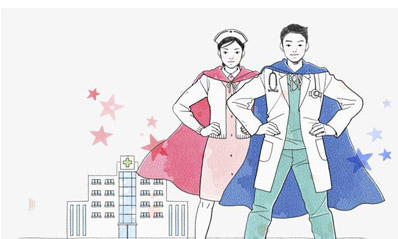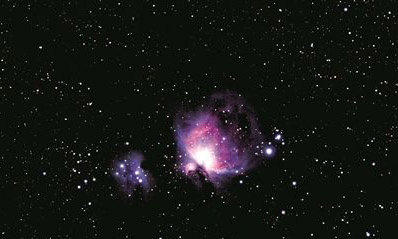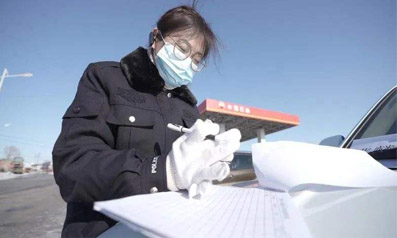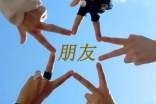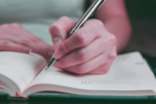篇一:《英语作文New year celebration and Chinese tradition》
New year celebration and Chinese tradition
With the New Year 2015 getting closer and closer, everyone seems very
happy. Besides 3 or 4 days’ holiday, we can go home which we leave for a very long time .Coming home becomes a feast for us. We can have dinner with our parents or friends, we recall the past and wish happiness to the future. With time
passes by, we have been an adult. However, our parents are getting older and older. We need to recognize that it’s our turn to raise them up. The celebration of New Year is very fantastic, such the countdown party, fantastic firework play, gorgeous night scene and so on. Unfortunately, an awful accident which killed 36 persons and hurt 49 persons happened at the shanghai bund, which attach sadness to this year’s New Year celebration. We should take ourselves very well when we attend such kinds of celebrations. This year I returned home, how about you? Some of my friends chose to stay at school and they
attended the ceremony which was organized by the Students’ Union .They said they really had a good time and they showed me some pictures of the celebration.
“You should go home for the new year whether you have money or
not ” ,which used to be a very popular saying during the Chinese .We can recognize the importance of home for the people who don’t stay at home very often .Home becomes a very warm word for them in the Chinese tradition. Reunion is the most important thing in the tradition which last for five thousand years or more.
New Year, which is called yuan dan in Chinese, is less important than Chinese New Year or Spring Festival. However ,we still choose to celebrate it .In ancient
times ,emperors usually offered sacrifices to gods or ancestors which died for a long time to pray for the favorable weather, peace and prosperity .In the folk, people worship Buddha, past Spring couplets and pictures,touch off the firecracker. Happiness spread all of the country
As time passed by, ways of celebrating become more and more various .First, our country considers it as the legal festivals and we can have a holiday to celebrate it. Second, we can write postcards or text message, even phone calls to send our best blessings .We have dinners with our closest people and countdown to meet the New Year. Last but not least, we can feel the warmth which the New Year brings us
So, New Year's Day is one of important days for many people in the word during the year..Most companies, shops, school, and government offices are closed during that time. People prepare for New Year's Day from late December. The New Year's meal is also prepared from the end of December. During the New Year's Day, people usually do not cook and relax at home. On New Year's Day, people first greet each other. Some people wear new coats and visit temples to pray for happiness and health throughout the New Year. Children are busy with getting the gifts from their parents and relatives.
What about your New Year?
篇二:《Chinese Tradition(英译汉)》
译/中南民族大学2014级MTI曾诗琴
汉语传统
汉语,汉藏语系中的一种语言,是联合国的官方语言,也是世界上使用者最多的一种语言。它是中华人民共和国和中国台湾的官方语言,香港和新加坡的官方语言之一。泰国、马来西亚和越南的大多数人都讲汉语。
远古时期的汉语可以追溯到公元前一世纪,凭借汉字的形式记录下来,可供中国的读书人学习。也就是表意文字。不像表音文字,表意文字不受语音演变的影响,因此在很大程度上不受变化的影响。然而,不可避免地,口语体沿着自己的轨迹发展,书面语和口语之间的鸿沟越来越宽。在白话文出现以前,口语体已经和古汉语有了明显区别。直到二十世纪上半叶白话文才取代古汉语成为正式书面语的媒介。古汉语有以下特点:
(a) 它的高信息承载度,经常被与电报的风格相提并论
(b) 它的语法易变性,同一个汉字可以当名词、动词、形容词或副词使用
(c) 它对时态和数的节制使用
(d) 它的音调特点,在文学创作中尤其重要,在文学翻译也如是{chinese,tradition,food,的英语作文}.
这些特点传统意义上引起了口头翻译上的差异,这种差异在笔头翻译上表现得尤为明显。白话文,现在叫做国语或普通话,是多音节的,词性繁多,多借助于语法规则,尽管如此也并没有像法语或德语那样广泛而强制使用。欧洲语言的翻译,主要是英语,已经逐步地使汉语与那些语言靠的更近,至少在写作风格方面。
自从第一次部落战争或生产交换以来,作为一个有着大量方言的大国,中国极有可能见证了笔译和口译活动的发展。早期的历史文献诸如公元前一世纪的《史记》提及了很多外交和商务背景下的笔译。早在周朝,公元前九世纪,就有专门政府官员负责口笔译工作;他们的头衔根据他们所负责的语言组别而不同。作为整个礼仪的一部分,在和外国使者的往来中他们总会在场。这个时期政府口译员的头衔叫“舍人”,字面意思是“靠舌头吃饭的人”。现代汉语对应“translation”有一个“译”字,构成了自汉代(公元前195年——公元七年)以来官员头衔的基础:译员或译使,字面意思是“翻译官”。历史记录也表明在汉朝,笔译员/口译员(译丈)常规情况下是由商人在他们东南亚和印度的漫长旅途中雇佣;他们也出现于诸如巴克特里亚开往中国西北的商旅队伍中。在唐朝(公元618-906年),中国和其邻
国文化交流达到新的高峰,有大批旅居中国的外国人被政府雇佣为口译员,并被允许和中国官员一起执行外交任务。
从周朝到现在的三千年里,中国翻译者基本上都一直在为政府和商人工作。现存的诗歌翻译至少可以追溯回到公元前四世纪,但是这些早期的文学翻译大多数都作为各种外交任务的经历记录下来。但是,在中国文化和社会发展的一些阶段中,翻译也扮演一个重要的角色,其影响力超过了政界和商界。这些时期里最重要的翻译和佛经、基督教传教士的经文、引发五四运动的政治和文化事件、中华人民共和国的成立以及其随后与欧洲国家的往来有关。但是笔译和口译在中国除了这些高峰时期以外也有一席之地,除了在那些时期里涉及的主要语言外,自十一世纪以来已有许多汉语书籍被翻译成诸如蒙古语、西夏语、满族语和日本语。
佛经的翻译
佛教在中国的传播引起了中国的第一次翻译浪潮。在公元二世纪中叶以前,已经有了第一批佛经的汉语翻译(尽管有些资料把时间往前推到公元70年)。这标志着一个大规模的翻译活动的开始,这些活动通常是由政府赞助的,且持续了九个世纪。考虑到时间跨度和这一时期译者的数量,翻译方法和手段并不是一成不变的;甚至连译者的文化和语言背景几个世纪以来都有相当大的变化。
佛经从梵文翻译成汉语大体可以分为三个阶段:东汉和三国时期(约公元148—265年);晋代和南北朝时期(约公元265—589年);以及隋唐和北宋(约公元589—1100年)。在第一个阶段,译者是来自中亚和新疆的和尚;他们大都因其宗教知识受人尊敬,但他们的汉语水平很差。像来自安息的安世高(第一个将佛经译作汉语的人),据说在他来到中国后不久就基本掌握了汉语,这样的和尚可谓是凤毛麟角。这种语言的不足反映在这个时期的翻译当中:尽管外国和尚在中国有其信徒和中国和尚的协助,他们的许多译作读起来仍然很拗口。而且,大量早期的汉语佛经翻译都不是基于印度文本,而是通过翻译的和尚的母语间接翻译而来的。
早期的翻译方法反映了这些译者的优缺点,也反映出当时的翻译重点在神学的准确性上。翻译论坛,或议场,被建立起来,由一个德高望重的佛教僧人作为主要译者(译主)。外国和尚的任务并不是要把文本的意思精确地传达出来。在这个外国和尚下面有一个或更多的精通这个和尚语言的口译者(答语或传语);他们的任务是把这个和尚的禅语译成汉语。有许多听众,有时有成百上千的中国和尚和外行学者以笔记的形式将这个和尚的阐释记录下来。汉语翻译当时由“记录员”(笔授)——负责把口译者的话用汉语写下来。这个过程不{chinese,tradition,food,的英语作文}.
仅包括咨询记录员自己的笔记,还包括观众中其他人记的笔记。口译、记录和检查的三步就是所有翻译论坛工作的基础。很明显论坛不仅意味着用汉语来翻译佛经,也是一种对佛经集中的讨论,而且同时产出汉语和详细的注释也不是什么不寻常的事。由于强烈的神学意味,那个外国和尚——尽管其目标语知识欠缺——总是被宣布为译者,尽管实际用汉语写作的那个人才被叫做记录员。佛经翻译的第二阶段特点是由学过汉语的优秀的外国和尚(有些直接来自印度次大陆)来主持仪式,他们因此有能力在没有口译员帮助时在翻译论坛里对经文进行口头上的汉语翻译。他们的口头翻译由记录员写下来,记录员再直接和和尚-译员核对手稿。最受尊敬又多产的和尚-译员之一就是鸠摩罗什(公元344-413年),他将三百多经卷译成汉语。也是在鸠摩罗什来到中国(公元401年)以后翻译论坛里才有参与者人数的详细记录。鸠摩罗什主持的论坛规模尤其弘大,参与者人数频频超过三千;由其他和尚主持的论坛参加者规定人数好像一直都是以百计数而不是以千计数。但是,也并不是每一个活跃在这一时期的外国和尚都掌握了汉语;有些还完全依赖于论坛召开期间的口译者。此外,我们不能就此假定文本的存在就是翻译的基础。佛经通常都是口头传授,再由和尚记忆下来,他们先是在翻译论坛上记诵梵语的佛经,然后接着用汉语将其笔译和口译出来。在这些案例中,论坛上记录的除了汉语版本还有一个梵语版本。佛经翻译的第三阶段对神学的阐释和翻译上开始分家,使得这一阶段明显区别于之前的实践。翻译论坛的规模急剧下降——正常情况下参与的和尚都不到三十六个。六世纪晚期以后举行的所有论坛,包括那些由中国历史上最多产的和尚-译者——玄奘(公元602-64年)主持的论坛,都是这个情况。玄奘,一个因去印度朝圣而出名的中国和尚,用汉语翻译了超过一千三百多卷的佛经。这个新的翻译实践的主要原因是中国和尚语言和神学知识的增长。旧式翻译论坛几乎任何一个都能参加,然而第三阶段对参加者是有高要求的:只有和尚或者有特殊才能的外界官员才有资格参加;所有人除了那些直接进行翻译工作的人以外都禁止进入译场。每个参与者都被安排了一个专职,专门职位的数目设置上升到九个。在这些职位中,润色者(润文)往往是一个文笔出众的政府官员;其他职位正常情况下都由和尚来填充。在宋朝(约984年),政府在一个地方建了一个梵语学校,为培养新一代的佛经翻译者从各大寺院招募了几十个学生。但是,印度佛教的衰落和政府政策的改变导致佛经翻译活动急剧减少,一直到十一世纪五十年代。翻译论坛不复存在,这个阶段以后完成的佛经翻译都是以个人名义而不是集体名义完成的。
佛经翻译为不同翻译方法的实践和讨论提供了沃土。一般而言,第一阶段的翻译是字对字并紧扣原语句法的。这极有可能不仅是因为论坛参与者的双语能力匮乏,还因为大家有一种信念——有启迪性的神圣的话语不应该被篡改。除了变形的目标语句法,音译用得太多,
结果就是译出来的东西对任何一个没有神学背景的人的人来讲都相当没法理解。第二阶段就有了一个明显的飞跃,这一阶段出现了为许多当代中国学者熟知的意译(自由翻译,缺少一个更好的术语)。句法倒置被根据目标语的使用而消除,草稿被修饰改进以便有更高的文学价值。鸠摩罗什被赞为这一方法的先驱。在个别极端的例子中,修饰可能已经走得太远,现在对此都还留有异议,认为这样影响了源语的信息传递。在第三阶段,翻译方法在很大程度上由玄奘主宰。他精通梵语和汉语,提倡把注意力放在源语文本风格上:文学加工不应该被用在简单平实的源语文本中。他还为音译定下规矩,并为他众多的弟子所采纳。
中国的传教士与翻译
第二波翻译活动也和宗教有关,尤其是那些在十六世纪晚期抵达中国的耶稣会传教士。耶稣会传教士,尤其是利玛窦(1552-1610),认定传播信条的最佳途径就是从中国的知识分子入手。为了达到这个目的,大量的科学作品被译成汉语在学者和政府官员中发行。这样的作品为耶稣会传教士赢来了来自政府和皇帝的很高的尊重,结果给他们的传教工作带来了更多的便利。传教翻译活动开始于利玛窦在1583年抵达中国后不久并且一直持续到十七世纪晚期。那个时期活跃在中国的传教士至少有七十人,他们都有译作:有些是直接翻译,其他则是基于西方现存作品的编辑。在这些由传教士提供的三百多篇译作里,有超过三分之一的讲的是科学的各大分支。
传教翻译活动有几个特点。第一,大量的传教士其实是中国朝廷任命的,或者因他们在科学领域里的贡献而享有皇帝给予的特权。第二,许多书的翻译带有特别的目的。一个典型的例子是1628至1635年间汤若望(1519-1666)和罗雅谷(1593-1638)为明朝翻译的大量关于天文学的书籍,也是中国年鉴修订的一部分。第三,传教士和中国政府官员之间的合作很常见;许多作品是合译的。有些耶稣会传教士和信仰基督教的明朝官员如徐光启(1562-1633)、杨廷均(1557-1627)以及李志皁(1565-1630)等人有着特别亲密的关系。例如,汤若望和罗雅谷翻译的天文学书籍,就都交给徐光启润过笔。
由传教士和中国学者/官员合译的科学作品分为以下几大类:
(a) 数学:领先作品要数欧几里德原理,该书前六章由利玛窦和徐光启翻译。其他
著名的要数阿基米德和帕尔迪的作品,据说清朝皇帝康熙也参与了帕尔迪的翻
译;
(b) 天文学:夏尔是天文学领域最多产的译者,他曾被明清两朝皇帝委任协助翻译
新年鉴;
(c) 地理:多数以带图例的地图形式出现。个别的关于矿物资源和采矿的作品也被
翻译,有名的要数阿格里科拉斯·德里·梅塔里卡;
(d) 物理学:包括诸如水利、机械和民用工程的话题。最知名的就是“齐齐徒手”
(《神奇工具的插图书》)。它一个从欧洲各大出版物收集的材料的混合的结
果;
(e) 宗教:现存的最早的关于《圣经》部分的翻译是由吉恩·巴塞特(1662-1702)
完成的。最早将旧约和新约翻译成白话文的是耶稣会传教士P.L.德·波洛
(1735-1814)。除了天主教教义翻译以外,《效法基督》也有几个版本的翻译。
在教皇对耶稣会的镇压之后,许多耶稣会传教士继续留在中国。甚至在政府倒戈相对时,他们也受到官员和中国基督教信徒的庇护,并且一般都能继续他们的翻译和传教工作;他们中许多人继续为清政府服务。例如,充当翻译的耶稣会教士张诚(1656-1730)和徐日升(1645-1708),于1689年作为专门的拉丁语口译员被指派到俄罗斯尼布楚执行外交任务。
这些耶稣会传教士们,以及后来其他的传教士,都没有从事单向的翻译,但他们在将中国古典文学以及中国哲学引进欧洲方面功不可没。利玛窦将“四书”(《大学》、《中庸》、《论语》和《孟子》)译成拉丁语,而金尼阁则将“五经”(《诗》《书》《易》《礼》和《春秋》)译成拉丁语。“四书五经”里的一些标题后来又由活跃在清朝的传教士重新翻译。这使得欧洲对中国的一切更感兴趣,尤其是在十七世纪。
王朝的覆灭
在十九世纪早期欧洲大国以军事力量作后盾的贸易入侵越来越迫切以致于北京政府没法儿忽略,于是在1838年派遣林则徐去广东禁烟。林则徐“师夷长技以制夷”的主张促进了第一个官方翻译队伍(四个留洋学习的人)来处理英语。他们从地方外国出版社翻译节选,例如《广州纪事报》(1827年创办)和《广州周报》(1835年创办),以及关于中国事务和国际法律的各种英语小册子。他们主要的成就是《海国图志》(《海上国家的地理》),该书出版于1844年,基于《穆雷的地理百科全书》写成。{chinese,tradition,food,的英语作文}.
林则徐的任务以失败告终,在一系列的军事失败后满族统治者1862年同意于北京创办一个语言学院(同文馆)。1867年首批录取的学生们有一个八年的语言课程——最初是英语,然后是法语,俄语和德语以及自然和社会科学。他们的主要任务是在外交领域,但是学
篇三:《A Traditional Chinese Food》
A Traditional Chinese Food——Yuanxiao{chinese,tradition,food,的英语作文}.
央视国际 2003年05月12日 16:26{chinese,tradition,food,的英语作文}.
Origin
There are many different beliefs in the origin of the Lantern Festival. But one thing for certain is that it had something to do with religious worship. One legend tells us that it was a time to worship Taiyi, the God of Heaven in ancient times. The belief was that the God of Heaven controlled the destiny of the human world. He had sixteen dragons at his beck and call and he could decide when to inflict drought, storms, famine or pestilence upon human beings. It began with Qinshihuang, the first emperor to unite the country, and since then all subsequent emperors ordered splendid ceremonies each year. The emperor would ask Taiyi to bring favorable weather and good health to him and his people. Emperor Wudi of the Han Dynasty directed special attention to this event. In 104 BC, he proclaimed it one of the most important celebrations and the ceremony
would last the whole night.
Another legend associates the Lantern Festival with Taoism. Tianguan is the Taoist god responsible for good fortune. His birthday falls on the 15th day of the first lunar month. It is said that Tianguan liked all types of entertainment. So followers prepared various kinds of activities during which they prayed for
good fortune.
The third story about the origin of the festival goes like this. Buddhism was first introduced to China during the reign of Emperor Mingdi of the Eastern Han Dynasty. That was in the first century. However, it did not exert any great
influence on the Chinese people. One day, Emperor Mingdi had a dream about a gold man in his palace. At the very moment when he was about to ask the mysterious figure who he was, the gold man suddenly rose to the sky and disappeared in the west. The next day, Emperor Mingdi sent a scholar to India on a pilgrimage to locate Buddhist scriptures. After journeying thousands of miles, the scholar finally returned with the scriptures. Emperor Mingdi ordered that a temple be built to house a statue of Buddha and serve as a repository for the scriptures.
Followers believed that the power of Buddha could dispel darkness. So Emperor Mingdi ordered his subjects to display lighted lanterns during
what was to become the Lantern Festival.
History
Until the Sui Dynasty in the sixth century, Emperor Yangdi invited envoys from other countries to China to see the colorful lighted lanterns and enjoy
the gala performances.
By the beginning of the Tang Dynasty in the seventh century, the lantern displays would last three days. The emperor also lifted the curfew, allowing the people to enjoy the festive lanterns day and night. It is not difficult to
find Chinese poems which describe the happy scene.
In the Song Dynasty, the festival was celebrated for five days and the activities began to spread to many of the big cities in China. Colorful glass and even jade were used to make lanterns, with characters from folk tales painted
on the lanterns.
However, the largest Lantern Festival celebration took place in the early part of the 15th century. The festivities continued for ten days. Emperor Chengzu had the downtown area set aside as a center for displaying the lanterns. Even today, there is a place in Beijing called Dengshikou. In Chinese, Deng means lantern and Shi means market. This area became a market where lanterns were sold during the day. In the evening, the local people would go there to see the
beautiful lighted lanterns on display.
Today, the displaying of lanterns is still a big event on the 15th day of the first lunar month throughout China. People enjoy the brightly lit night. Chengdu in Southwest China's Sichuan Province, for example, holds a lantern fair each year in the Cultural Park. During the Lantern Festival, the park is
literally an ocean of lanterns! Many new designs attract countless visitors. The most eye-catching lantern is the Dragon Pole, This is a lantern in the shape of a golden dragon, spiraling up a 27-meter-high pole, spewing fireworks
from its mouth. It is quite an impressive sight!
Yuanxiao
Besides entertainment and beautiful lanterns, another important part of the Lantern Festival, or Yuanxiao Festival is eating small dumpling balls made of glutinous rice flour. We call these balls Yuanxiao or Tangyuan. Obviously, they get the name from the festival itself. It is said that the custom of eating Yuanxiao originated during the Eastern Jin Dynasty in the fourth century, then
became popular during the Tang and Song dynasties.
The fillings inside the dumplings or Yuanxiao are either sweet or salty. Sweet fillings are made of sugar, Walnuts, sesame, osmanthus flowers, rose petals, sweetened tangerine peel, bean paste, or jujube paste. A single ingredient or any combination can be used as the filling. The salty variety is
filled with minced meat, vegetables or a mixture.
The way to make Yuanxiao also varies between northern and southern China. The usual method followed in
版权声明
本站文章收集于互联网,仅代表原作者观点,不代表本站立场,文章仅供学习观摩,请勿用于任何商业用途。
如有侵权请联系邮箱tuxing@rediffmail.com,我们将及时处理。本文地址:http://www.15033.cn/chuzhong/cyzw/227614.html

